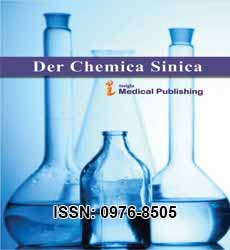ISSN : 0976-8505
Der Chemica Sinica
Green Synthesis of Metal Nanoparticles Using Plant Extracts: A Sustainable Approach
<p>Austin Marhabi*</p>
<p>Department of Chemistry, University of Toronto, 80 St. George Street, Canada</p>
<p>*Corresponding author:
Austin Marhabi,
Department of Chemistry, University of Toronto, 80 St. George Street, Canada,
E-mail: austin@marhabi.ca</p>
<p>Received date: January 01, 2025, Manuscript No. IPDCS-25-20595; Editor assigned date: January 03, 2025, PreQC No. IPDCS-25-20595 (PQ); Reviewed date: January 15, 2025, QC No. IPDCS-25-20595; Revised date: January 22, 2025, Manuscript No. IPDCS-25-20595 (R); Published date: January 28, 2025, DOI: 10.36648/.16.1.2</p>
<p>Citation: Marhabi A (2025) Green Synthesis of Metal Nanoparticles Using Plant Extracts: A Sustainable Approach. Der Chemica Sinica Vol.16 No.1:2</p>
Introduction
Green synthesis of metal nanoparticles using plant extracts has emerged as a sustainable and eco-friendly alternative to conventional physical and chemical methods, which often involve toxic chemicals and high energy inputs. This approach leverages the natural reducing, stabilizing, and capping agents present in plants, such as polyphenols, flavonoids, terpenoids, and alkaloids, to produce nanoparticles with desirable size, shape, and stability. Its simplicity, cost-effectiveness, and environmental compatibility make it a promising strategy in nanotechnology for biomedical, agricultural, and industrial applications [1].Description
The process of green synthesis involves mixing aqueous plant extracts with metal salt solutions, where phytochemicals act as reducing agents that convert metal ions into zero-valent nanoparticles, while simultaneously stabilizing them to prevent aggregation. This method not only avoids the need for hazardous chemicals but also allows fine control over nanoparticle properties by adjusting factors such as extract concentration, pH, temperature, and reaction time. Plant extracts from leaves, fruits, roots, seeds, and even peels have been successfully used for synthesizing nanoparticles of gold, silver, zinc, and copper, demonstrating both versatility and scalability [2]. Biologically synthesized nanoparticles exhibit unique physicochemical properties, including high surface-to-volume ratios and enhanced reactivity, which make them highly useful across multiple domains. In biomedical sciences, green-synthesized nanoparticles show excellent potential for antimicrobial, anticancer, and drug delivery applications due to their biocompatibility and minimal toxicity compared to use hat Chemically synthesized counterparts ultimately, overcoming these barriers will determine how effectively this sustainable approach Can be harnessed to meet global technological impact the sustainable nature of this approach lies in its integration with renewable resources, minimal generation of harmful by-products, and alignment green chemistry principles [3]. By using easily available plant materials, the process can be scaled up at lower cost and energy consumption, making it suitable for industries in developing regions where resource limitations are common. However, challenges such as standardization of synthesis protocols, variability of phytochemical content across plant species [4]. Regulatory frameworks and quality-control measures will be critical to ensure safety, consistency, and efficacy when translating plant-based nanomaterial synthesis from research to industrial and biomedical applications. Collaborative efforts between material scientists, chemists, biotechnologists, and policymakers can accelerate the development of standardized protocols that balance innovation with compliance requirements. Advances in characterization techniques and real-time monitoring tools are also expected to improve reproducibility and scalability, paving the way for more reliable nanoparticle production and medicine highlights its transformative potential to address pressing global challenges in an environmentally responsible manner [5].Conclusion
Green synthesis of metal nanoparticles using plant extracts provides a sustainable, safe, and versatile platform that aligns with global efforts toward eco-friendly nanotechnology. Its applications in medicine, agriculture, and environmental remediation underscore its transformative potential, though further optimization and standardization are required to translate laboratory success into large-scale industrial use.Acknowledgement
None.Conflict of Interest
None.References
- Bartlett SL, Johnson JS (2017) Synthesis of Complex Glycolates by Enantioconvergent Addition Reactions. Acc Chem Res 50: 2284–2296
Google Scholar Cross Ref Indexed at
- Enders D, Bonten MH, Raabe G (2007) Asymmetric Nucleophilic Glyoxylation Through a Metalated α-Aminonitrile Derivative in Michael Additions to Nitroalkenes. Angew Chem Int Ed 46: 2314–2316
Google Scholar Cross Ref Indexed at
- Duan HF, Xie JH, Qiao XC, Wang LX, Zhou QL (2008) Enantioselective Rhodium-Catalyzed Addition of Arylboronic Acids to α-Ketoesters. Angew Chem Int Ed 47: 4351–4353
Google Scholar Cross Ref Indexed at
- Bell A, Severi E, Owen CD, Latousakis D, Juge N (2023) Biochemical and Structural Basis of Sialic Acid Utilization by Gut Microbes. J Biol Chem 299: 102989–103008
Google Scholar Cross Ref Indexed at
- Angelastro MR, Mehdi S, Burkhart JP, Peet NP, Bey P (1990) α-Diketone and -Keto Ester Derivatives of N-Protected Amino Acids and Peptides as Novel Inhibitors of Cysteine and Serine Proteinases. J Med Chem 33: 13–16

Open Access Journals
- Aquaculture & Veterinary Science
- Chemistry & Chemical Sciences
- Clinical Sciences
- Engineering
- General Science
- Genetics & Molecular Biology
- Health Care & Nursing
- Immunology & Microbiology
- Materials Science
- Mathematics & Physics
- Medical Sciences
- Neurology & Psychiatry
- Oncology & Cancer Science
- Pharmaceutical Sciences
